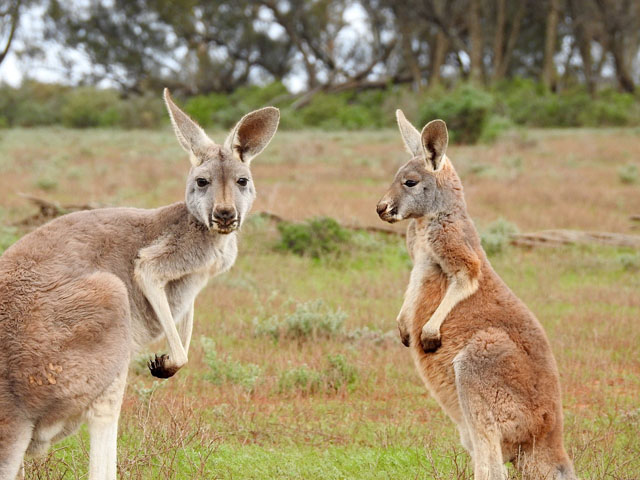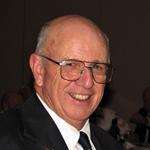
We’re not short of a few here
On the ‘prickle farm’ here, we are not short of a few kangaroos.
When I walk or drive down the paddock it’s not hard to count between 30 and 40 of the hopping marsupials.
When they see me, they head toward the fences and I try not to scare them because fences damaged by fleeing ’roos are time consuming to repair.
Mostly, ’roos go under fences but when frightened, the big ones go over, the medium sized ones try to go through and the little ones generally go under. It’s the middle-sized ones which do the most damage.
I don’t mind a few running around and when the Danish mother of our son-in-law came to visit, she was enthralled with them.
There’s nothing similar in Denmark.
Permanent water
Now on the ‘prickle farm’ we have no permanent water; we rely on run-off into dams and they usually stand the test. Not so this year, several are dry – understandable in the conditions but it has me wondering, what would the ‘roos do if the dams dry up?
There’s a creek over the hill about 10km, it usually has good water but at present, it too is dry.
So I went to the fire warden’s map I have just as an interest to see where the closest permanent water not made by humans and it turns out to be 20km north.
If it wasn’t for man’s intervention, where would the kangaroos get a drink?
I love reading history
The land we live on was settled in 1840 by the Leslie Brothers, their main station at Canning Downs is 25km north of us.
The settlers had trouble with dingoes, eagles and some of the indigenous people taking their sheep but their diaries made little mention of the hopping marsupials.
I’m not saying there were none, there were plenty but only where they could get water every day.
During a wet time, they’d have spread out across the countryside but dry times saw them back near the permanent water.
So how many were there and how many now?
Australiadidn’t have much water away from the coastal rivers – look at recent television coverage of the Darling River - however, as man moved in, he made permanent water and the kangaroos followed.
We built dams, we put weirs in the creeks and rivers, we dug bores and put up windmills to pump water into troughs, bores into the Great Artesian Basin didn’t need pumps, it poured out over the land and farmers made bore-drains to take water all across their land and, of course, the kangaroos not only found good water, the bore drains provided excellent feed.
In 2017, there was estimated to be 50 million kangaroos in Australia, a number which goes up and down depending on conditions but this is the largest number ever recorded, said to have increased by six million in two years and to have doubled in the previous six years.
Back in 2009, there were estimated to be 27 million 'roos.
Do we have more ‘roos now than when white man first arrived? Undoubtedly.
In fact, kangaroos are the most numerous of all large wild land animals on earth and now we have kangaroos where they were never meant to be.
Drought
The figures quoted by authorities show how, during a decent drought, Kangaroo numbers can drop Australia-wide by 20 million.
Twenty million? Almost the entire population of humans in this country.
I’m sure when God created our world, He never meant for animals to suffer by dying in droughts.
"If you don't cull the kangaroos or don't reduce their populations in some way, then you're going to lose a lot of other biodiversity," Professor Davis Paton of the University of Adelaide told Australia's ABC News.
We brought water to inland Australia and now we reap the consequences.
.jpg) John Skinner is a retired journalist who has written nine biographies on famous campdrafting competitors. He was an Australian infantry soldier wounded in Vietnam, served six years as a Police Officer, was CEO of the then Australian Rough Riders Assn (Pro-Rodeo based in Warwick, Qld). He and his wife Marion retired to a small farm 25km south of Warwick 20 years ago. They have three children and now seven grandchildren.
John Skinner is a retired journalist who has written nine biographies on famous campdrafting competitors. He was an Australian infantry soldier wounded in Vietnam, served six years as a Police Officer, was CEO of the then Australian Rough Riders Assn (Pro-Rodeo based in Warwick, Qld). He and his wife Marion retired to a small farm 25km south of Warwick 20 years ago. They have three children and now seven grandchildren.

John Skinner served as an infantry soldier in Vietnam then the Tasmanian Police before taking up the position of CEO of the Australian Rough Riders Association (professional rodeo based in Warwick Qld). Before retirement to his small farm, he was a photo-journalist for 25 years. He is married with 3 children and 7 grandchildren.